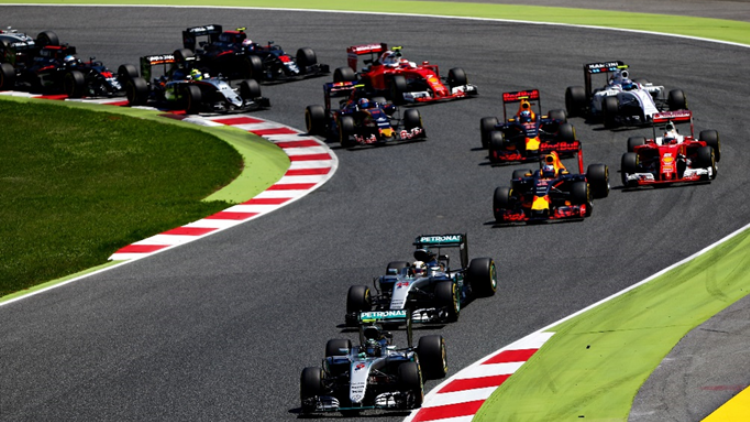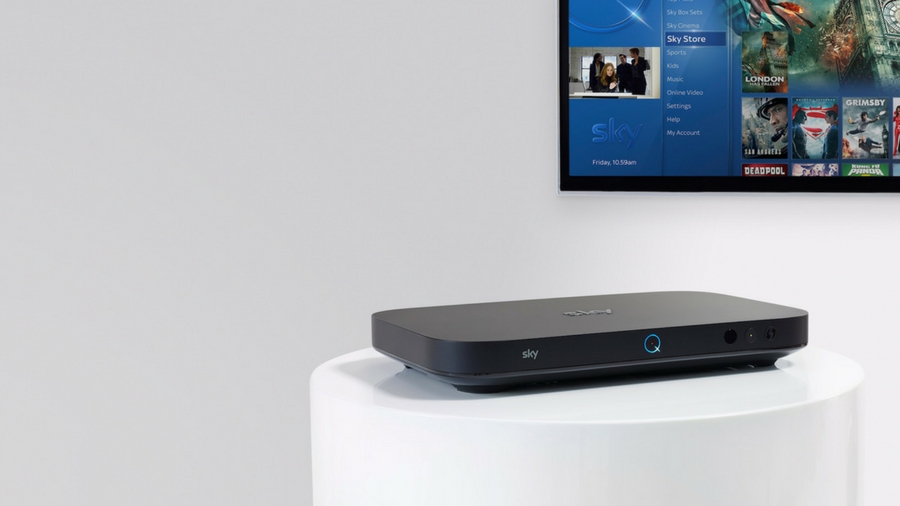The fast and the framerate: Why Sky's Ultra HD F1 season is its biggest challenge yet
Keep an eye on every scrap of rubber

The technology world often jokes that the aim of bigger, better and brighter screens is to be able to produce an image that’s ‘better than real life’ but the truth is that we still have a long way to go before TV even catches up to what real life looks like.
Sky’s upcoming broadcast of this year’s F1 season is a big step in the right direction. For the first time the championship will be broadcast in Ultra HD, up from the HD broadcasts of previous seasons.
But perhaps more importantly, this season will be the first to broadcast in full 50 frames per second, which is double that of the previous 25 frame broadcasts.
The development means that not only will the races be viewable in much more detail than ever before, but this clarity will also be maintained when things get fast - which when you’re talking about F1’s 185mph monsters is pretty much all the time.
Action replay
But it’s the sport’s replays that saw the most surprising boost in picture quality according to Sky’s Head of Operations James Clements, “We are seeing in replays and slow-motion the analysis side has also improved more than I thought it would do because there’s more high-quality cameras capturing the content at source.”
“The first race in Australia shouldn’t be any different from a Premier League match from the Emirates.”
James Clements, Head of Operations, Sky
It’s not been an easy road to get here. Whereas the first sport to get the 4K treatment, the Premier League, all takes place in a single country F1 takes place all across the world.
This creates challenges when you’re having to transmit the amount of data required by 4K back to the UK in real-time. Clements explains, “That’s been a two-year process to build up the backbone network resilience to give us the confidence that we could deliver from anywhere.”
Sign up for breaking news, reviews, opinion, top tech deals, and more.
In the end, the result should be that, “the first race in Australia shouldn’t be any different from a Premier League match from the Emirates” despite the sheer distance that the 4K data is having to cover.

Smooth motion compromises
Unfortunately the specific challenges presented by F1 have had to lead to some compromises being made.
The cameras on-board the cars, for instance, will remain at 1080p for the time being rather than receiving the full Ultra HD treatment.
The reason for this is that without a physical link to the broadcaster, these cameras are having to transmit their data wirelessly, which is too much of a limitation for the amount of data required for Ultra HD.
However, you should still see an improvement with these onboard cameras from last year, since they’ll now be taking a 50 frames per second feed as opposed to last year’s 25 frames. While they won’t match the rest of the broadcast in terms of resolution, this should at least mean that there won’t be any awkward changes in framerate.
Don’t give up on the prospect of fully Ultra HD broadcasts though. “The step up to UHD will come as a combination of better bandwidth management and more efficient encodes being delivered,” Clements says.

That distinctive Ferrari red
Sky isn’t done with the technological improvements. The television industry’s other exciting new technology, HDR, isn’t ready for Sky broadcast just yet.
HDR will arrive eventually, but according to Clements it’s a matter of waiting for workflows to mature to the extent that they’re ready for the new tech, “With UHD we ran it for a good year in the background... [and] we’re doing similar research around HDR to ensure that the live experience can be as strong as possible for the viewer.”
"Sports like golf are dying on their feet, they’re really losing out in this battle, and Formula 1 cannot get complacent... I think keeping up with the technology, connectivity and social media is mega important."
Martin Brundle
When HDR arrives broadcasts will not benefit from the higher peak brightnesses and deeper blacks that the standard is known for, but it will also see the broadcasts expand to fill the expanded color gamut allowed by the Rec.2020 standard as opposed to the more limited Rec.709 standard that’s currently employed.
If that sounds nerdy to you, then that’s because it is. But the takeaway here is that when HDR broadcasts roll around, F1’s Ferrari’s will look redder than they ever have before.

The best it's ever looked
We’re in really exciting times for televisions. Premium standards are trickling down into mainstream sets, and the amount of time it takes broadcasters to actually make use of these new technologies is getting much shorter.
Sure, Sky is in the enviable position of controlling more of the pipe that brings content into your home but that doesn’t change the fact that it’s brought Ultra HD to consumer broadcasts very quickly indeed, and it’s done so for a huge amount of content, both live and on-demand.
With Formula 1 we might be about to see the most compelling use of the technology yet as Ultra HD and high framerates combine to make this season a broadcast to keep an eye on.
But better broadcasting technology is only one part of the puzzle. As Sky's F1 pundit Martin Brundle explains, "Sports like golf are dying on their feet, they’re really losing out in this battle, and Formula 1 cannot get complacent... I think keeping up with the technology, connectivity and social media is mega important."
What's clear is that F1 has an ongoing fight on its hands if it wants to keep the next generation of viewers engaged throughout the season.
Sky's better broadcasting technologies are certainly a step in the right direction, but it's just one piece of the puzzle of keeping the sport alive.
- Don't miss our full Sky Q review.

Jon Porter is the ex-Home Technology Writer for TechRadar. He has also previously written for Practical Photoshop, Trusted Reviews, Inside Higher Ed, Al Bawaba, Gizmodo UK, Genetic Literacy Project, Via Satellite, Real Homes and Plant Services Magazine, and you can now find him writing for The Verge.